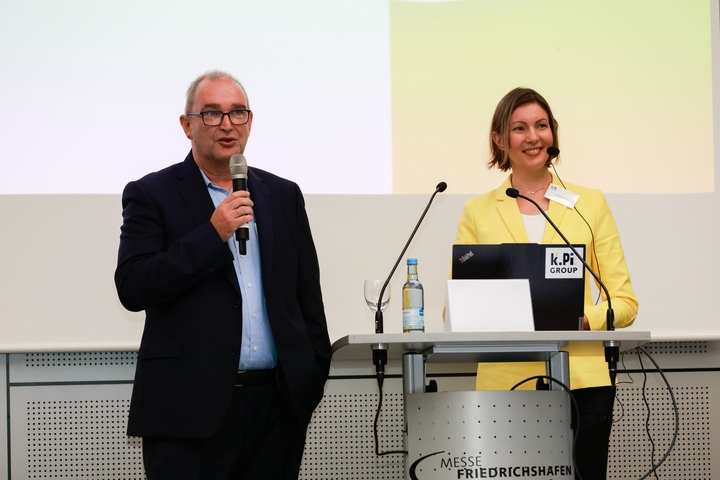KI GROUP SUMMIT FAKUMA
Discussions on current state and future of plastics industry / Polymer price forecasts for optimising purchasing strategy
— By Plasteurope.com staff —
The German and European plastics industry started 2024 with high hopes. Three quarters into the year, the mood of the industry is now subdued. This was clearly noticeable at this year’s Fakuma trade fair in Friedrichshafen, Germany. Between geopolitical crises and weak demand, processors, machinery makers, and feedstock suppliers are finding it increasingly difficult to display entrepreneurial optimism.
The development of the plastics industry in 2024 and what might come in the months ahead was the central theme of the 9th KI Group Summit of Plasteurope.com’s parent company. Presenting their insights to more than 100 participants, the experts on PIE’s price team gave their assessments of the current situation and ventured an outlook on future challenges.
The German and European plastics industry started 2024 with high hopes. Three quarters into the year, the mood of the industry is now subdued. This was clearly noticeable at this year’s Fakuma trade fair in Friedrichshafen, Germany. Between geopolitical crises and weak demand, processors, machinery makers, and feedstock suppliers are finding it increasingly difficult to display entrepreneurial optimism.
The development of the plastics industry in 2024 and what might come in the months ahead was the central theme of the 9th KI Group Summit of Plasteurope.com’s parent company. Presenting their insights to more than 100 participants, the experts on PIE’s price team gave their assessments of the current situation and ventured an outlook on future challenges.
 Experts from the Plasteurope.com Price Team: Julia Mihalkina (r.) and Martin Bäcker (Photo: Manuel Hauptmannl) |
The main topic of the expert talk, which was moderated by Christian Preiser, editor-in-chief of PIE’s German sister publication Kunststoff Information, was the ongoing volatility of prices. Both quotations for crude oil – the most important feedstock for the plastics industry – and for ethylene and propylene as well as those for the polymers themselves have fluctuated rapidly in recent months.
The closure of the Suez Canal in the first quarter of 2024, the crisis on the Red Sea with immense consequences for global supply chains, temporary stability in the summer, and selective surges in demand all characterised the developments on the polyethylene market. Polypropylene saw an increase in volumes in some cases, but margins lagged far behind. Although energy prices have fallen significantly from their 2022 peaks and freight rates are also currently on a downward trend, demand from the most important customer industries remains the biggest cause for concern.
Plastics warehouses are well stocked. Many processors shy back from investments because of the uncertainty. All of this leads to declining polyolefin prices. Martin Bäcker, head of polymer prices at PIE, and Vincent Breit, market analyst on the Plasteurope.com Price Team, expect quotations for PE and PP to remain low until the end of the year, and to trend further down. As for recyclates, there is still turmoil in the PET sector, as PET recyclate is set to remain pricier than virgin material for the foreseeable future. “Everyone wants sustainability, but nobody wants to pay more for it,” Bäcker summarised the predicament.
Under the title The future awaits: Optimising purchasing strategy with polymer price forecasts, Julia Mihalkina, the Plasteurope.com Price Team’s senior market analyst, then spoke about the methodology of the new Plasteurope.com price forecasts and presented in detail which factors are influencing prices. In addition to historical price and market data, the machine learning-based models include global material availability – fed from PIE’s Polyglobe database – as well as logistics costs and exchange rates. As a result, the polymer price forecasts achieve an astonishing accuracy of more than 90%, thus providing rock-solid guidance for business decisions. Especially in volatile times, it is essential to recognise price developments early on and to use them for one’s purchasing strategy, emphasised Mihalkina.
Learn more about the status of the price forecasts for C2, C3, PE, PP, and PVC as of 14 October. The next update is set to take place on 24 October.
— Translated by Christopher Köbel
22.10.2024 Plasteurope.com [256388-0]
Published on 22.10.2024

 German version of this article...
German version of this article...